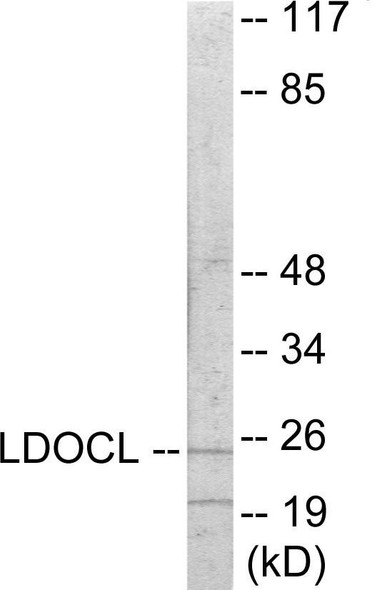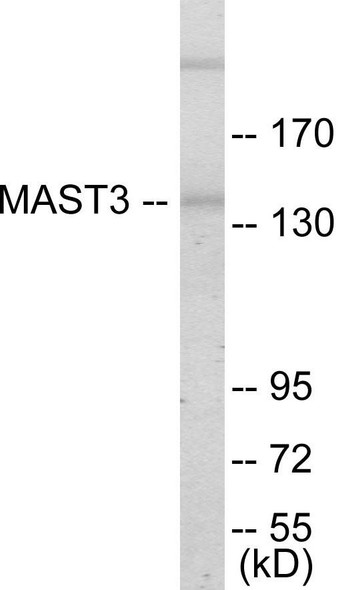TF3B Colorimetric Cell-Based ELISA
- SKU:
- CBCAB01174
- Product Type:
- ELISA Kit
- ELISA Type:
- Cell Based
- Research Area:
- Epigenetics and Nuclear Signaling
- Reactivity:
- Human
- Mouse
- Detection Method:
- Colorimetric
Description
TF3B Colorimetric Cell-Based ELISA
The TF3b Colorimetric Cell-Based ELISA Kit is a powerful tool for studying transcription factor 3b (TF3b) levels in cell culture samples. This kit offers high sensitivity and precision, allowing for accurate and reproducible results in a variety of experimental settings.TF3b is a key transcription factor involved in gene regulation and cell growth, making it essential for understanding various biological processes.
By measuring TF3b levels, researchers can gain valuable insights into cellular mechanisms and potentially identify new therapeutic targets for a range of diseases.With its easy-to-use protocol and reliable performance, the TF3b Colorimetric Cell-Based ELISA Kit is an invaluable resource for researchers looking to advance their studies in cell biology and transcriptional regulation.
| Product Name: | TF3B Colorimetric Cell-Based ELISA |
| Product Code: | CBCAB01174 |
| ELISA Type: | Cell-Based |
| Target: | TF3B |
| Reactivity: | Human, Mouse |
| Dynamic Range: | > 5000 Cells |
| Detection Method: | Colorimetric 450 nmStorage/Stability:4°C/6 Months |
| Format: | 96-Well Microplate |
The TF3B Colorimetric Cell-Based ELISA Kit is a convenient, lysate-free, high throughput and sensitive assay kit that can detect TF3B protein expression profile in cells. The kit can be used for measuring the relative amounts of TF3B in cultured cells as well as screening for the effects that various treatments, inhibitors (ie siRNA or chemicals), or activators have on TF3B.
Qualitative determination of TF3B concentration is achieved by an indirect ELISA format. In essence, TF3B is captured by TF3B-specific primary antibodies while the HRP-conjugated secondary antibodies bind the Fc region of the primary antibody. Through this binding, the HRP enzyme conjugated to the secondary antibody can catalyze a colorimetric reaction upon substrate addition. Due to the qualitative nature of the Cell-Based ELISA, multiple normalization methods are needed:
| 1. | A monoclonal antibody specific for human GAPDH is included to serve as an internal positive control in normalizing the target absorbance values. |
| 2. | Following the colorimetric measurement of HRP activity via substrate addition, the Crystal Violet whole-cell staining method may be used to determine cell density. After staining, the results can be analysed by normalizing the absorbance values to cell amounts, by which the plating difference can be adjusted. |
| Database Information: | Gene ID: 2972, UniProt ID: Q92994, OMIM: 604902, Unigene: Hs.424484 |
| Gene Symbol: | TF3B |
| Sub Type: | None |
| UniProt Protein Function: | GTF3B: General activator of RNA polymerase which utilizes different TFIIIB complexes at structurally distinct promoters. The isoform 1 is involved in the transcription of tRNA, adenovirus VA1, 7SL and 5S RNA. Isoform 2 is required for transcription of the U6 promoter. Belongs to the TFIIB family. 7 isoforms of the human protein are produced by alternative splicing. |
| UniProt Protein Details: | Protein type:Transcription initiation complex Chromosomal Location of Human Ortholog: 14q Cellular Component: nucleoplasm Biological Process: rRNA transcription; transcription from RNA polymerase III promoter; tRNA transcription Disease: Cerebellofaciodental Syndrome |
| NCBI Summary: | This gene encodes one of the three subunits of the RNA polymerase III transcription factor complex. This complex plays a central role in transcription initiation by RNA polymerase III on genes encoding tRNA, 5S rRNA, and other small structural RNAs. The gene product belongs to the TF2B family. Several alternatively spliced variants encoding different isoforms, that function at different promoters transcribed by RNA polymerase III, have been identified. [provided by RefSeq, Jun 2011] |
| UniProt Code: | Q92994 |
| NCBI GenInfo Identifier: | 20455319 |
| NCBI Gene ID: | 2972 |
| NCBI Accession: | Q92994.1 |
| UniProt Secondary Accession: | Q92994,Q13223, Q3SYD9, Q5PR24, Q6IQ02, Q96KX3, Q9HCW6 B3KU36, B4DIG5, B7Z2N3, F5H5Z7, F8WA46, |
| UniProt Related Accession: | Q92994 |
| Molecular Weight: | 47,978 Da |
| NCBI Full Name: | Transcription factor IIIB 90 kDa subunit |
| NCBI Synonym Full Names: | BRF1, RNA polymerase III transcription initiation factor 90 kDa subunit |
| NCBI Official Symbol: | BRF1 |
| NCBI Official Synonym Symbols: | BRF; CFDS; hBRF; BRF-1; GTF3B; TAF3C; TAF3B2; TF3B90; TAFIII90; TFIIIB90; HEL-S-76p |
| NCBI Protein Information: | transcription factor IIIB 90 kDa subunit |
| UniProt Protein Name: | Transcription factor IIIB 90 kDa subunit |
| UniProt Synonym Protein Names: | B-related factor 1; BRF-1; hBRF; TAF3B2; TATA box-binding protein-associated factor, RNA polymerase III, subunit 2 |
| Protein Family: | Transcription factor |
| UniProt Gene Name: | BRF1 |
| UniProt Entry Name: | TF3B_HUMAN |
| Component | Quantity |
| 96-Well Cell Culture Clear-Bottom Microplate | 2 plates |
| 10X TBS | 24 mL |
| Quenching Buffer | 24 mL |
| Blocking Buffer | 50 mL |
| 15X Wash Buffer | 50 mL |
| Primary Antibody Diluent | 12 mL |
| 100x Anti-Phospho Target Antibody | 60 µL |
| 100x Anti-Target Antibody | 60 µL |
| Anti-GAPDH Antibody | 60 µL |
| HRP-Conjugated Anti-Rabbit IgG Antibody | 12 mL |
| HRP-Conjugated Anti-Mouse IgG Antibody | 12 mL |
| SDS Solution | 12 mL |
| Stop Solution | 24 mL |
| Ready-to-Use Substrate | 12 mL |
| Crystal Violet Solution | 12 mL |
| Adhesive Plate Seals | 2 seals |
The following materials and/or equipment are NOT provided in this kit but are necessary to successfully conduct the experiment:
- Microplate reader able to measure absorbance at 450 nm and/or 595 nm for Crystal Violet Cell Staining (Optional)
- Micropipettes with capability of measuring volumes ranging from 1 µL to 1 ml
- 37% formaldehyde (Sigma Cat# F-8775) or formaldehyde from other sources
- Squirt bottle, manifold dispenser, multichannel pipette reservoir or automated microplate washer
- Graph paper or computer software capable of generating or displaying logarithmic functions
- Absorbent papers or vacuum aspirator
- Test tubes or microfuge tubes capable of storing ≥1 ml
- Poly-L-Lysine (Sigma Cat# P4832 for suspension cells)
- Orbital shaker (optional)
- Deionized or sterile water
*Note: Protocols are specific to each batch/lot. For the correct instructions please follow the protocol included in your kit.
| Step | Procedure |
| 1. | Seed 200 µL of 20,000 adherent cells in culture medium in each well of a 96-well plate. The plates included in the kit are sterile and treated for cell culture. For suspension cells and loosely attached cells, coat the plates with 100 µL of 10 µg/ml Poly-L-Lysine (not included) to each well of a 96-well plate for 30 minutes at 37°C prior to adding cells. |
| 2. | Incubate the cells for overnight at 37°C, 5% CO2. |
| 3. | Treat the cells as desired. |
| 4. | Remove the cell culture medium and rinse with 200 µL of 1x TBS, twice. |
| 5. | Fix the cells by incubating with 100 µL of Fixing Solution for 20 minutes at room temperature. The 4% formaldehyde is used for adherent cells and 8% formaldehyde is used for suspension cells and loosely attached cells. |
| 6. | Remove the Fixing Solution and wash the plate 3 times with 200 µL 1x Wash Buffer for five minutes each time with gentle shaking on the orbital shaker. The plate can be stored at 4°C for a week. |
| 7. | Add 100 µL of Quenching Buffer and incubate for 20 minutes at room temperature. |
| 8. | Wash the plate 3 times with 1x Wash Buffer for 5 minutes each time. |
| 9. | Add 200 µL of Blocking Buffer and incubate for 1 hour at room temperature. |
| 10. | Wash 3 times with 200 µL of 1x Wash Buffer for 5 minutes each time. |
| 11. | Add 50 µL of 1x primary antibodies (Anti-TF3B Antibody and/or Anti-GAPDH Antibody) to the corresponding wells, cover with Parafilm and incubate for 16 hours (overnight) at 4°C. If the target expression is known to be high, incubate for 2 hours at room temperature. |
| 12. | Wash 3 times with 200 µL of 1x Wash Buffer for 5 minutes each time. |
| 13. | Add 50 µL of 1x secondary antibodies (HRP-Conjugated AntiRabbit IgG Antibody or HRP-Conjugated Anti-Mouse IgG Antibody) to corresponding wells and incubate for 1.5 hours at room temperature. |
| 14. | Wash 3 times with 200 µL of 1x Wash Buffer for 5 minutes each time. |
| 15. | Add 50 µL of Ready-to-Use Substrate to each well and incubate for 30 minutes at room temperature in the dark. |
| 16. | Add 50 µL of Stop Solution to each well and read OD at 450 nm immediately using the microplate reader. |
(Additional Crystal Violet staining may be performed if desired – details of this may be found in the kit technical manual.)










